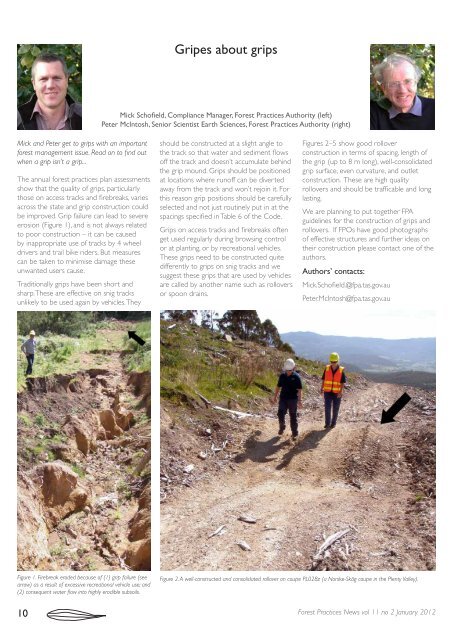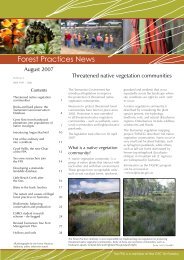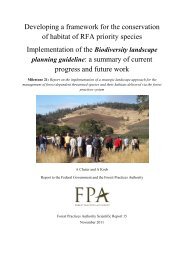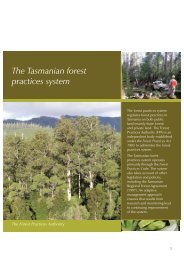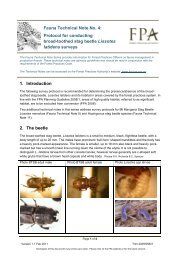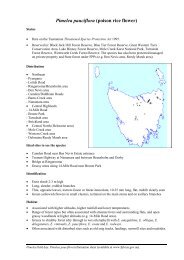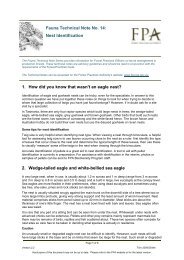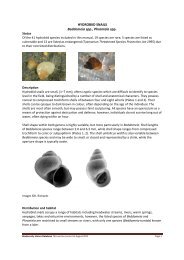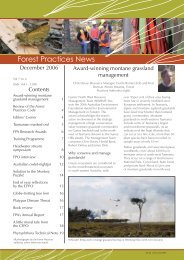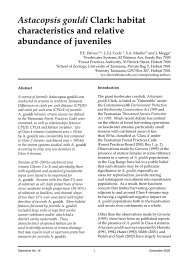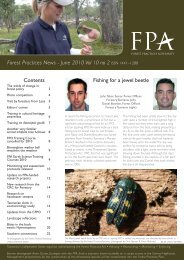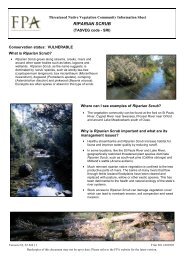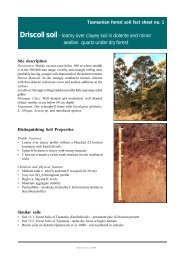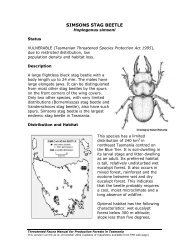FPN vol 11 no 2 January 2012 - The Forest Practices Authority
FPN vol 11 no 2 January 2012 - The Forest Practices Authority
FPN vol 11 no 2 January 2012 - The Forest Practices Authority
Create successful ePaper yourself
Turn your PDF publications into a flip-book with our unique Google optimized e-Paper software.
Gripes about gripsMick Schofield, Compliance Manager, <strong>Forest</strong> <strong>Practices</strong> <strong>Authority</strong> (left)Peter McIntosh, Senior Scientist Earth Sciences, <strong>Forest</strong> <strong>Practices</strong> <strong>Authority</strong> (right)Mick and Peter get to grips with an importantforest management issue. Read on to find outwhen a grip isn’t a grip...<strong>The</strong> annual forest practices plan assessmentsshow that the quality of grips, particularlythose on access tracks and firebreaks, variesacross the state and grip construction couldbe improved. Grip failure can lead to severeerosion (Figure 1), and is <strong>no</strong>t always relatedto poor construction – it can be causedby inappropriate use of tracks by 4 wheeldrivers and trail bike riders. But measurescan be taken to minimise damage theseunwanted users cause.Traditionally grips have been short andsharp. <strong>The</strong>se are effective on snig tracksunlikely to be used again by vehicles. <strong>The</strong>yshould be constructed at a slight angle tothe track so that water and sediment flowsoff the track and doesn’t accumulate behindthe grip mound. Grips should be positionedat locations where ru<strong>no</strong>ff can be divertedaway from the track and won’t rejoin it. Forthis reason grip positions should be carefullyselected and <strong>no</strong>t just routinely put in at thespacings specified in Table 6 of the Code.Grips on access tracks and firebreaks oftenget used regularly during browsing controlor at planting, or by recreational vehicles.<strong>The</strong>se grips need to be constructed quitedifferently to grips on snig tracks and wesuggest these grips that are used by vehiclesare called by a<strong>no</strong>ther name such as rolloversor spoon drains.Figures 2–5 show good rolloverconstruction in terms of spacing, length ofthe grip (up to 8 m long), well-consolidatedgrip surface, even curvature, and outletconstruction. <strong>The</strong>se are high qualityrollovers and should be trafficable and longlasting.We are planning to put together FPAguidelines for the construction of grips androllovers. If FPOs have good photographsof effective structures and further ideas ontheir construction please contact one of theauthors.Authors’ contacts:Mick.Schofield.@fpa.tas.gov.auPeter.McIntosh@fpa.tas.gov.auFigure 1. Firebreak eroded because of (1) grip failure (seearrow) as a result of excessive recreational vehicle use; and(2) consequent water flow into highly erodible subsoils.Figure 2. A well-constructed and consolidated rollover on coupe PL028z (a Norske-Skög coupe in the Plenty Valley).10 <strong>Forest</strong> <strong>Practices</strong> News <strong>vol</strong> <strong>11</strong> <strong>no</strong> 2 <strong>January</strong> <strong>2012</strong>


